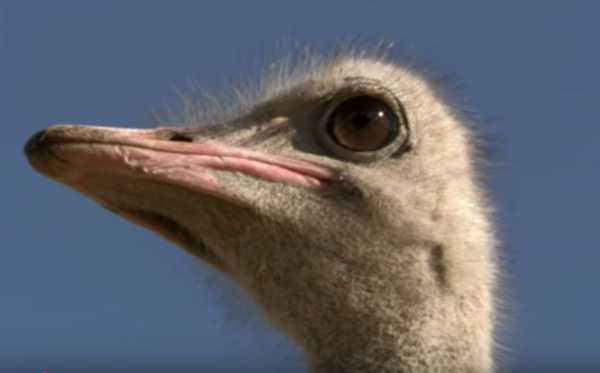By Vishal Goel, | March 14, 2017

The origin and evolution of ostrich is attributed to the continental drift of Gondwanaland or Gondwana. (YouTube)
Researchers in India have found genetic evidence that ostriches inhabited India about 25,000 years ago. Scientists from IIT Roorkee and some other institutions studied DNA from fossilized egg shells discovered from several sites, majorly from Rajasthan and Madhya Pradesh, which revealed a 92 percent similarity to the African ostrich species.
Like Us on Facebook
The DNA study, conducted at the Centre for Cellular and Molecular Biology (CCMB) in Hyderabad, helped the scientists analyze "ancient DNA" of the ostrich eggs and establish that "the egg shells (found in India) are genetically similar to the African ostrich," said CCMB's senior principal scientist Kumarasamy Thangaraj. He further added that the carbon dating of the ostrich egg shells to determine the age shows that they are at least 25,000 years old.
The origin and evolution of ostrich is attributed to the continental drift of Gondwanaland or Gondwana. Around 150 million years ago, Gondwana used to be a super-continent comprising South America, Arabia, Africa, Australia, India, Madagascar, and Antarctica of the present times, according to an official release. An initial break-up of this super-continent (during the Early Cretaceous period - 130 to 100 million years ago) separated Africa from Indo-Madagascar, which eventually led to hopping of ostriches in Africa through Eurasia via the land route around 20 million years ago.
However, the continental drift theory for the existence of ostriches in India was not proven scientifically, said the release. But over the time, several geologists and archaeologists have discovered ostrich egg shell pieces, mainly in Rajasthan and Madhya Pradesh. However, only the morphological pattern of the fragile egg shell pieces was not enough evidence to prove the existence of ostrich in India. Thus, the researchers analyzed the mitochondrial DNA to come to the conclusion about the existence of ostriches in India.
The findings of the research have been published in the 9 March 2017 issue of science journal PLOS ONE.
-
Use of Coronavirus Pandemic Drones Raises Privacy Concerns: Drones Spread Fear, Local Officials Say

-
Coronavirus Hampers The Delivery Of Lockheed Martin F-35 Stealth Fighters For 2020

-
Instagram Speeds Up Plans to Add Account Memorialization Feature Due to COVID-19 Deaths

-
NASA: Perseverance Plans to Bring 'Mars Rock' to Earth in 2031

-
600 Dead And 3,000 In The Hospital as Iranians Believed Drinking High-Concentrations of Alcohol Can Cure The Coronavirus

-
600 Dead And 3,000 In The Hospital as Iranians Believed Drinking High-Concentrations of Alcohol Can Cure The Coronavirus

-
COVID-19: Doctors, Nurses Use Virtual Reality to Learn New Skills in Treating Coronavirus Patients











